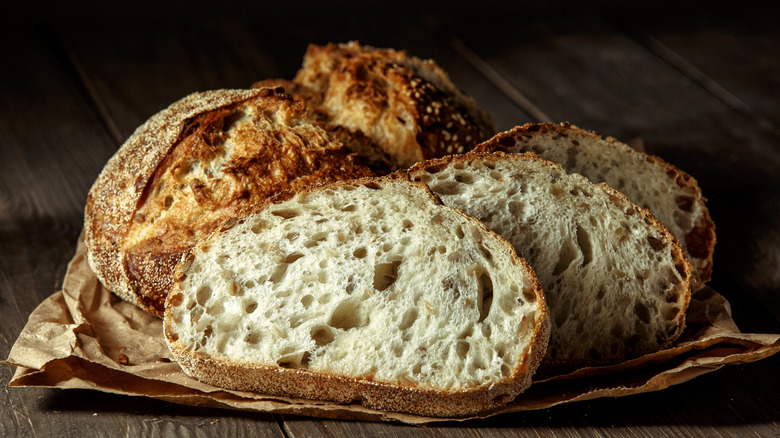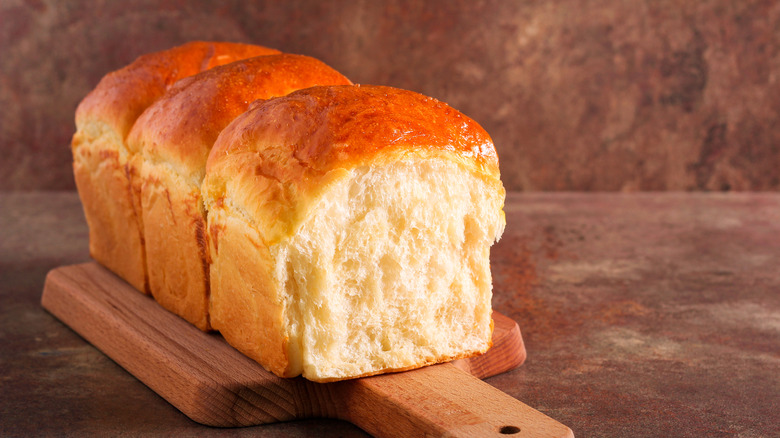How All-Purpose Flour Leads To A Denser Bread Loaf
If you've ever made a loaf of bread with all-purpose flour because it's all you had on hand and were disappointed or frustrated with the results, you're not the first, and you won't be the last. Perhaps your bread loaf doesn't have the same airy crumb as the photos in the recipe; instead, it's dense with a close crumb. The culprit might be the flour you used. There is a real difference between bread and all-purpose flour, and if you want airy focaccia or a beautiful sourdough boule, knowing the differences can lead to bread-baking success.
The reason your all-purpose flour bread is dense is because of the amount of protein in all-purpose flour versus the amount in bread flour. All-purpose flour is all-purpose because it strikes a happy medium between the protein levels of bread flour and cake flour, which have around 13 percent and 10 percent, respectively. Bread flour has a higher protein content so it helps the dough rise and build a strong network to support the shape of the loaf. It can absorb a lot of water, which when combined with yeast allows the gluten network to support the rise, and we see the network in those airy, open-crumb loaves of sourdough. All-purpose flour just can't support this growth the way bread flour can, which means the air bubbles will be smaller, leading to a dense bread loaf with a tighter crumb.
You can swap bread flour for APF, but you might need to reduce the liquid in the recipe
If you really don't have time to snag some bread flour or aren't really bothered by the end result — not all of us are trying out for "The Great British Baking Show" in our heads — you can absolutely substitute all-purpose flour for bread flour. Bread flour can take on a lot more water than all-purpose, so cut back on your water by about one-quarter. If you feel like you need to add more water, add it little by little and keep an eye on the texture. If you're subbing in all-purpose flour, you can help develop the gluten with extra kneading or an overnight rise in the fridge. You'll never quite be able to achieve the lofty rise, airy texture, and chewy crust that you would with bread flour, but you'll still have delicious homemade bread. The recipe you're following should give you some tips on the texture you're looking for.
Fortunately, not all bread recipes require bread flour. Breads and rolls that call for all-purpose flour are usually a bit denser and close-crumbed than a high hydration, long fermentation no-knead bread recipe. Recipes like milk bread, focaccia, and sandwich loaf are ideal candidates for all-purpose flour because they have a tender, tight, crumb that isn't dense or heavy.

